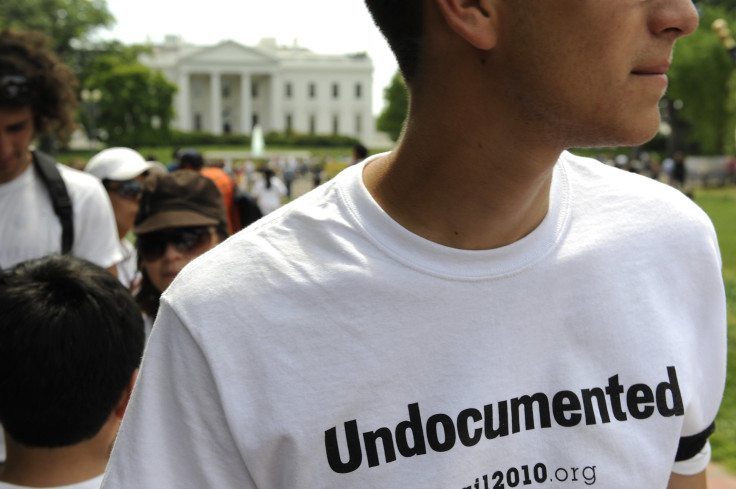
When the US economy nosedived between 2007 and 2009, the number of undocumented immigrants in the United States did, too: from an all-time peak of 12.2 million as of 2007, it fell to 11.3 million in 2009. Now, the number of people living without papers within the country's borders has begun to rise again, according to a new Pew Center study based on government census data: as of March 2012, 11.7 million undocumented immigrants were living in the U.S. The finding will likely reignite debates over how to discourage the phenomenon and what the government should do about what is again a growing demographic.
The Pew Center arrived at their conclusion using a rather simple method: subtract the numbers of legal immigrants from the number of total foreign-born population. It found that trends varied among the six states where 60 percent of undocumented immigrants live - California, Florida, Illinois, New Jersey, New York and Texas. From 2007 to 2011, all six of those states except Texas saw peak numbers of undocumented immigrants in 2007 before those numbers fell over subsequent years. Texas, on the other hand, saw only increases over that whole span. The post-2007 population dip was sharpest among Mexicans (who were 52 percent of undocumented immigrants in 2012), though after 2010 the decline in their numbers appears to have halted. In 2012, 6.05 million undocumented Mexicans were in the US, down 900,000 from 2007.
Throughout the 1990s and into the first part of the 2000s, numbers of undocumented grew by leaps and bounds. In 1990 there were 3.5 million; in 1995 5.7 million; by the year 2000 they'd breached the 8 million mark. That rise may be attributable to the 1986 Immigration Reform and Control Act (IRCA), the amnesty bill which conservative voices in the 2013 immigration reform debate have bashed for giving legal status to some 3 million undocumented immigrants without committing enough resources to border enforcement to keep out unauthorized crossers. Many conservatives say the amnesty it provided encouraged future potential immigrants to brave the risks and come to the United States illegally.
But in a 2007 paper entitled "Understanding America's Immigration 'Crisis'", sociologist Douglas Massey (then a scholar with the libertarian Cato Institute) argued that IRCA was indeed largely responsible for a big rise in numbers of undocumented - just for the opposite reason. Massey wrote that by expanding the Border Patrol and imposing sanctions on employers who hired undocumented workers, it kicked off a trend of subsequent border-enforcement laws and operations - in 1990, 1993 and 1996 -- which sought to keep border-crossers out and, in the process, unwittingly kept them in. Whereas migrants once crossed back and forth between the US and Mexico with relative freedom, he said, the new "prevention by deterrence" laws forced them to hunker down once they found work in the US.
RELATED: House 'Gang Of 7' Calls It Quits After Reps. Carter And Johnson Resign
© 2024 Latin Times. All rights reserved. Do not reproduce without permission.